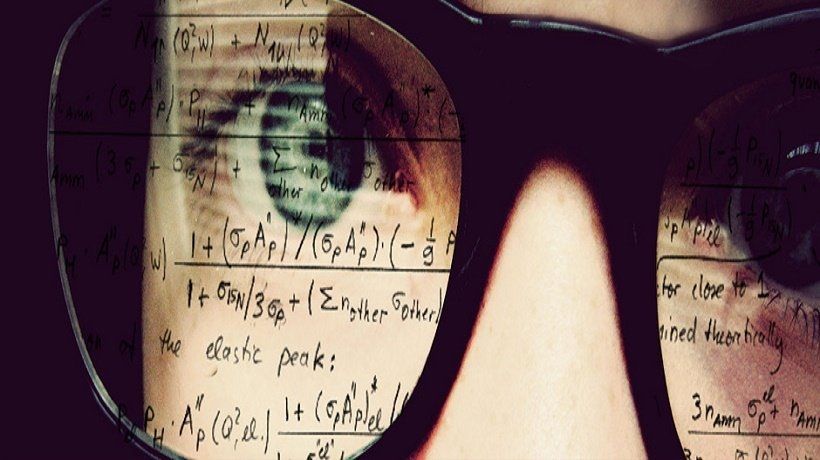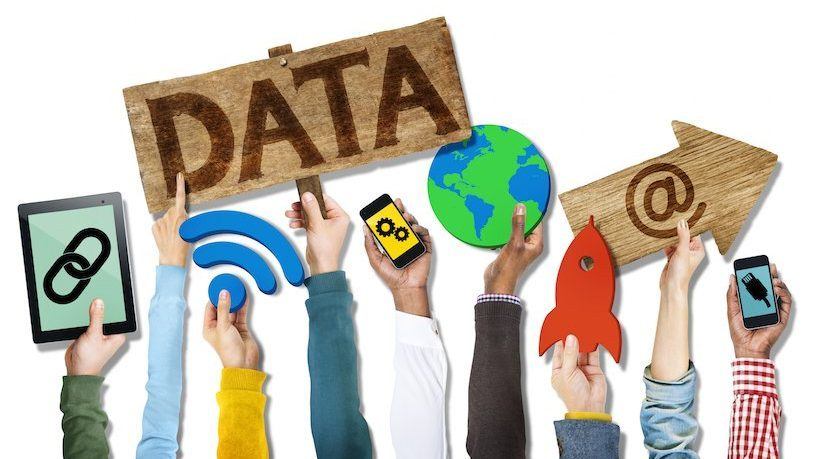The Dark Side Of Big Data: A Scenario - "I Have A Story To Tell..."
I confess that I have a fondness for military and espionage fiction. There are many interesting story-lines that authors have exposed me to. As my profile indicates, I am an explorer even when I am reading fiction. When I become engaged in this genre, I try to work out problems presented in scenarios to the characters to not only consider different potential solutions that I would try if I was the character, but also to predict the potential outcomes of each potential path. Naturally, risk assessment, performance capability, and real time intelligence are all important factors to be considered. With regards to real time intelligence and similar to the game of chess, it is important to develop an accurate profile of your opponents because, in doing so, the accuracy of your predictions as to their intentions and ways of thinking increase dramatically, percentage wise. The more data that you have to work with the higher the probability that you will arrive at a complete picture of what you are dealing with.
This week I started reading a novel offering by noted military fiction author Mark Greaney, who has taken the helm in continuing the successful series started by the late author Tom Clancy. The title of this particular work was True Faith and Allegiance (G.P. Putnam & Sons, 2016). What was most intriguing was the story line which goes something like this:
"In Mark Greaney’s Tom Clancy True Faith and Allegiance, someone with inside knowledge and access to personal details of key military and government personnel has been selling that information to enemies of the United States.

The actual breach occurred as a result of oversight on the part of a security organization tasked by the U.S. military to put their database through security tests to make sure that it could not be breached. However, when the organization was finished, they forgot to delete the database from their servers. Overtime it was forgotten about until a disenchanted but highly intelligent predictive analyst was able to take the raw data and organize it into very precise and targeted intelligence that could be sold to the highest bidder. He was able to make alignments between this data and all other sources of data coming from everything from social media to personal e-mails and text messages from cell phones. This resulted in precise real time profiles of targets of interest."
As I read this it suddenly hit me! What this is really about is how Big Data could be used by a criminal organization to subvert democracy for their own gains. Then a flood of questions came into my mind such as:
- Is it possible via the use of Big Data for a gifted predictive analyst to pinpoint what I am doing at a given hour on a given day with precision? My first response was that such precise predictive personal data is not possible, even with the high level of technology that we have access to. However, then I remembered how much personal information people routinely place on social media such as Facebook, Twitter, and also on simple apps such as common email.
- With the advance of the Internet of Things technology (IoT), will we be contributing to the growing data on our daily activities? What about technology that takes sensor readings of our vital signs during exercise activities?
- With the multitude of businesses online and governmental, are appropriate safeguards being taken to protect who has access to the data and for what reasons? Data breaches have happened much more frequently in the last decade than ever before. Well known department stores such as Winners have made headlines with the loss of personal customer data.
In a specific article titled One of the biggest hacks happened last year but nobody noticed by Zack Whittaker for Zero Day pointed out that a data base containing detailed information on 52 million people was stolen. With that information coupled to incoming data from many sources such as social media, profiling just took on a whole new meaning within the context of Big Data.
The Nature And Definition Of Big Data
Lisa Arthur, Teradata Applications CMO and Forbes contributor, explains that Big Data “is a collection of data from traditional and digital sources inside and outside your company that represents a source for ongoing discovery and analysis”.
She asserts that traditional data must be included in Big Data because it is an important piece of the Big Data picture. Indeed, incorporating data from all sources is key to optimizing the insights gained with Big Data.

Some of the first organizations to embrace Big Data were online and startup firms. Firms such as Facebook, eBay, Google, and LinkedIn were built around Big Data from the very beginning. Surely, as an online worker you have felt a little "creeped out" by Google's uncanny ability to read your mind about your needs and your personal preferences before you had even publicly acknowledged them.
When we look at the characteristics of Big Data, there are 3 main characteristics:

As implied above, Big Data generates volume from the storage and processing of very large quantities of digital information that defies analysis using traditional computing technologies. With the rise of the great potential of quantum computing, these barriers will be wiped away.

A second characteristics of Big Data is velocity and as can be judged from the statistics below, this complements the power of Big Data.

A third characteristic is variety. With the advent of the IoT technologies, the variety of data is about to expand even more.

Summarizing these characteristics in a simple graphic might produce the following:

Therefore it is easy to say that Big Data and Predictive Analytics are the most intriguing trends in learning innovation. The answers to important questions could have very profound effects on business. Such questions as:
- What is big data and how can it impact my company?
- Can it be used to help us deliver what we have promised our clients in a more efficient and cost effective manner?
- Can it help us grow as a company to meet the potential we know that it has and help us find and develop new markets in a very globally competitive economy?
The Seductive Potential Of Big Data For Business
With the break-neck pace of the rolling out of new technologies, we have to stop and ask what is its potential for prospering business and education. For business, David Strom (2015), a world known expert on networking and communications technology, suggests that there are 3 main ways that Big Data can help business:
- Make it more predictable.
- Replicate your initial successes or trials.
- Enhance customer engagement.
It is the last item on the above list that holds Big Data's greatest promise:

Another aspect of Big Data is the promise of increasingly positive growth in revenues for business organizations that make use of Big Data.

Adding to this positive picture as suggested earlier, the growth in the number of data sources will increase as technology advances making the profiling of customers and competitors all the more precise to the point where predictions about future habits of such groups gain in accuracy making decision making more effective. As early as 2013, the seeds of what Big Data could mean for business organizations were starting to show life.

Then there is the possibility of expanding the business to capitalize on national and global opportunities:

"So, given the positive growth picture, what is the down side of all this?"
The Dark Side Of Big Data
As businesses rush to take advantage of the great potential of Big Data, there are some cautions that business is failing to recognize which could have a dramatic impact on the future health and welfare of the organization. Some of these are as follows:
1. The Dazzle Of New Technology.
Business organizations want to not only protect their market share globally but also open up potentially new markets never explored before. New technologies are held up as the "Holy Grail" by which to achieve this end. Business leaders have a responsibility to show distinctively improved ROI to stock holders that make quarterly reports glow. However, in the scramble to adopt new technologies it is important to step back and consider the possible vulnerabilities that such technologies might open up. A case in point is the "cloud" technology. Obviously, with the huge increase in data that is becoming available from multiple sources, storage needs to be effective to meet the new demand. However, not everything is as it appears to be.
In an article titled The dirty dozen: 12 cloud security threats" written for InfoWorld magazine by Fahmida Rashid (Mar. 11, 2016), we are being dazzled by the technology and not taking the necessary security precautions. This is not just an organization IT problem. It is a decision maker problem because it is the decision maker who is being swayed by effective digital marketing that is being applied.
2. Making Data Security A Priority.
The obvious question that needs to be asked is whether or not business organizations and decision makers are making data security a high enough priority. As indicated earlier, the threats are real and a number of very high profile data breaches have caused dramatic drops not only in stock value but also in the confidence that clients and the public in general have in very well known business organizations.
Bernard Marr a best-selling business author, keynote speaker and consultant in strategy management, performance management, analytics, KPIs and big data in an article titled Why is Big Data so Dangerous? (Sept. 14, 2016) outlines 5 key risks that Big Data presents to business organizations. Who has access, what kind of budget have business organizations allotted to data security and how the data is used are key ideas for business organizations to pay attention to. As can be noted in the following structural diagram, how secure are the numerous access points especially if the cloud is used as a storage depot?

As suggested by the Tom Clancey novel, some story-lines you never want to see become realities....









